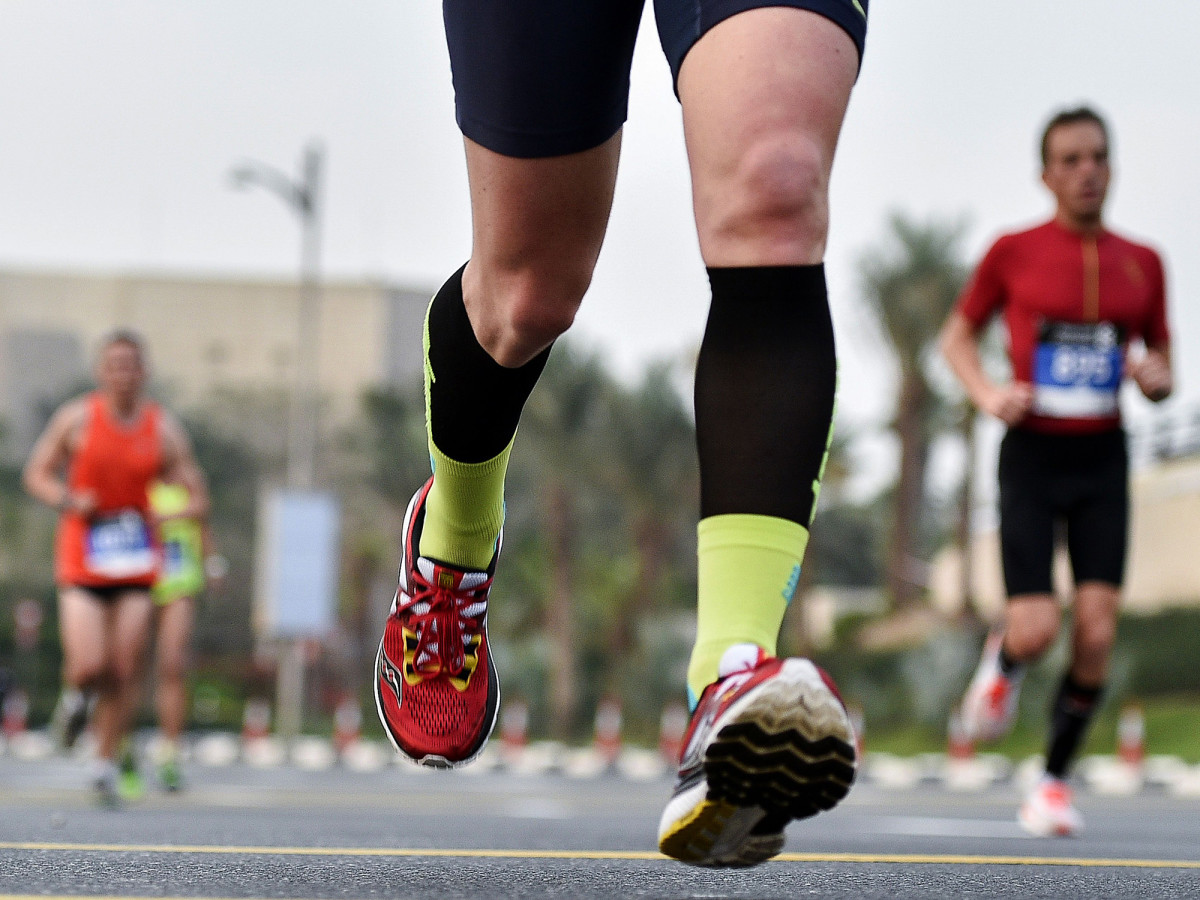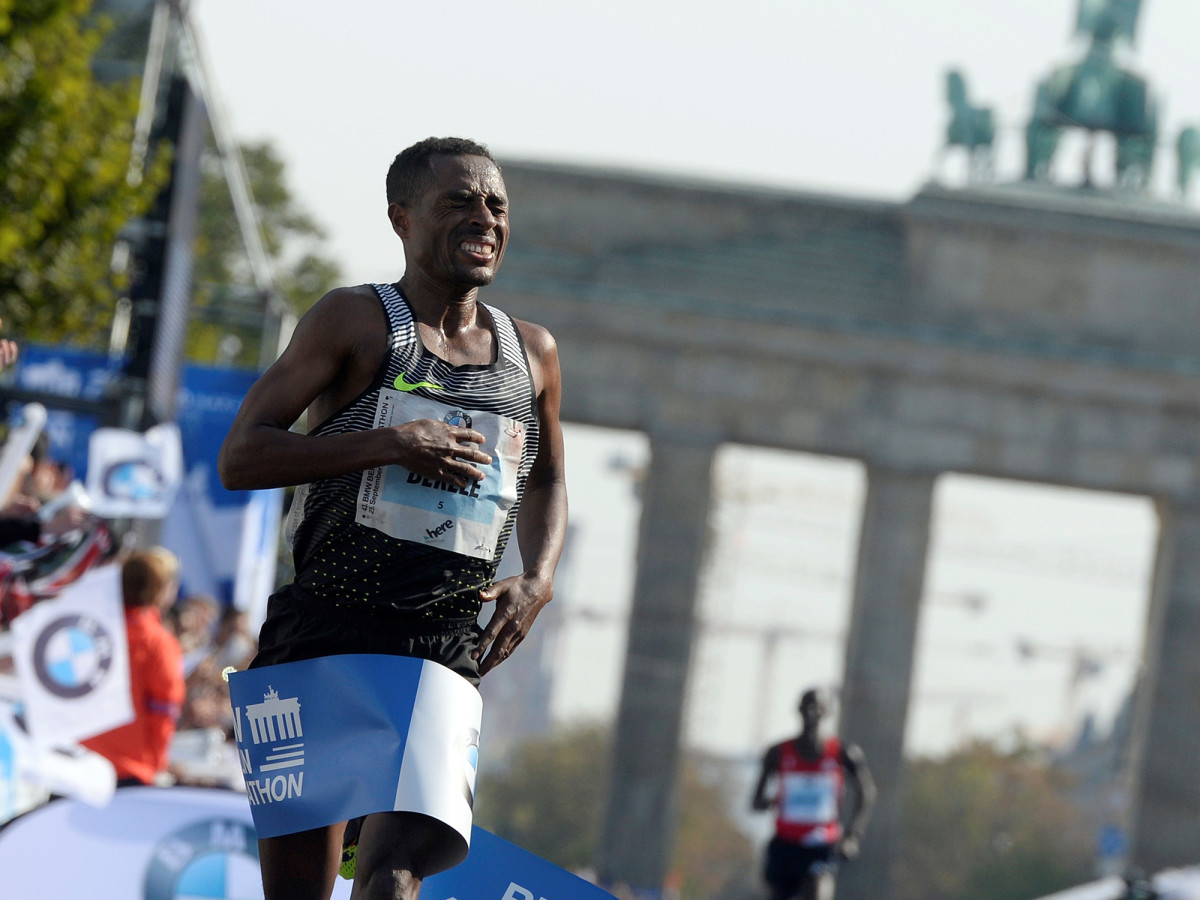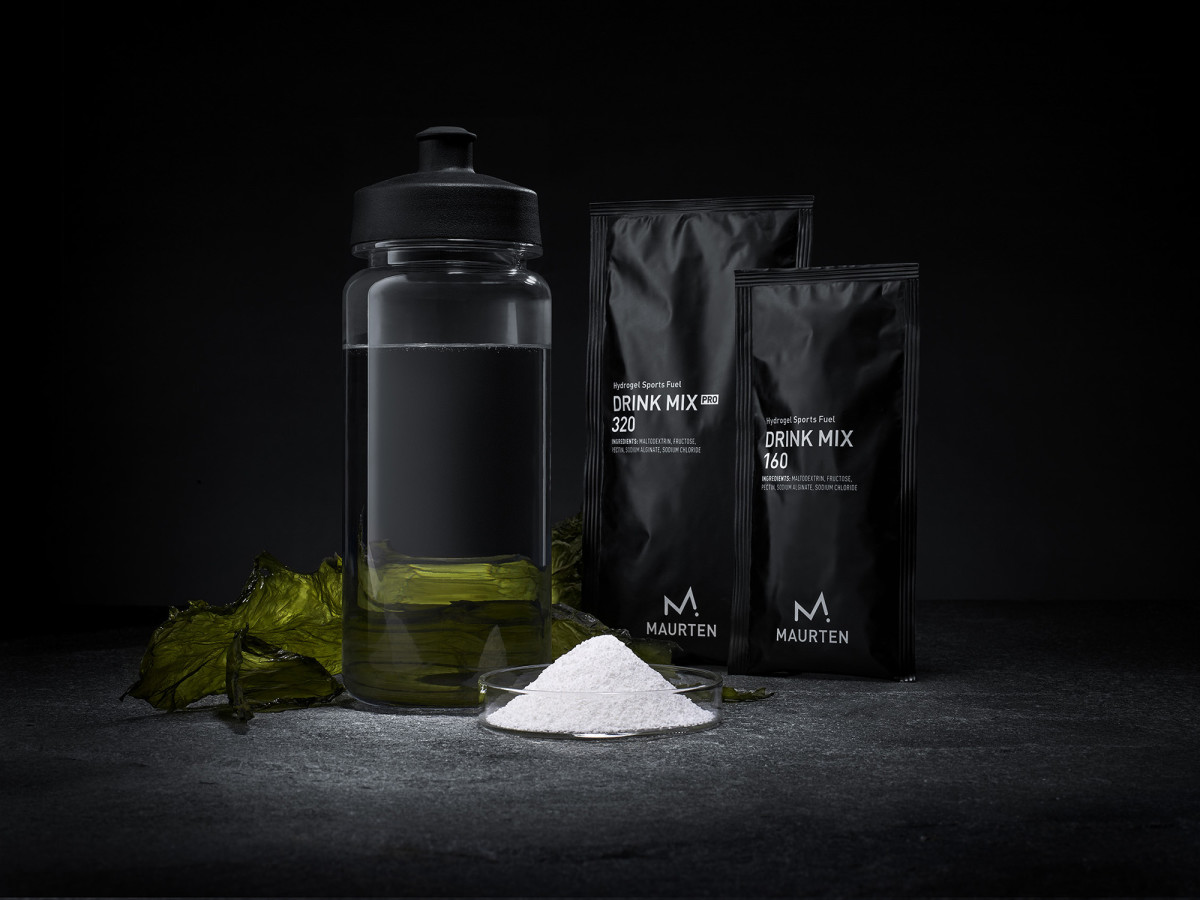This drink hopes to propel elite marathoners to the sub-two hour mark

Shoes can only take a runner so far in the quest for a sub-two hour marathon.
In recent weeks, Nike and Adidas released their advanced footwear, but a few test runs have shown that fancy carbon fiber plates and cushioning are only part of the equation when it comes to pushing the limits of human athletic performance. There are psychological factors that play into running at high speeds for extended periods, but there are also physiological issues, such as glycogen depletion, that also have a role.
Swedish-based startup Maurten is taking a new and advanced approach in solving the glycogen depletion issue, using simple ingredients to assist in the process. At the beginning of the year, the Sub2 Project’s Twitter account shared a photo of a secret-looking drink that was used by Kenenisa Bekele in the Dubai Marathon. Intrigued by the strange bottle and its contents, I reached out to find out what was inside the bottles.

In the 1960s, the simple mix of sugar, salt and water to make a sports drink was a major turning point in sports hydration. Over the years, some problems have come up. When an athlete takes a normal sports drink like Powerade or Gatorade, if there is too much sugar in it, the time it takes to pass from the stomach to the intestine is slowed. East African runners (as well as a handful of European and U.S. runners) have started using a new product during major marathons that have eased the problems of high carb intake on the stomach.
Maurten looks to encapsulate, or compact, the sugar with a hydrogel. The drink converts to a hydrogel based on the acidity (pH) of the stomach. The hydrogel enables a smooth transportation of the drink through the stomach and to the intestine where the water, salt and carbohydrates are absorbed into the body. Hydrogels are produced from a combination of two ingredients: alginate (which is extracted from the cell walls of brown algae) and pectin (which is found in fruits). The ingredients are very simple and commonplace within the food industry. When the two ingredients meet under the right circumstances, they create a pH-sensitive hydrogel.
Nike unveils Zoom Vaporfly Elite, Vaporfly 4% for optimistic sub-two hour marathon attempt
“We’re working with about six universities in England, Denmark, South Africa and Sweden and there’s also top -level nutritionists and doctors involved,” says Olof Sköld, Maurten’s CEO and co-founder. “Often, they’ll say ‘Ah! Why didn’t I think of that. The solution is far from simple but when we see how it works, people are saying ‘Of course!’”
The first product that the startup is launching is 80 grams of carbohydrates per half liter, which is three times as much a normal sports drink. It also eliminates many of the unnecessary elements of a product such as Gatorade, which contains excess acids, preservatives and flavoring. Maurten has little to no taste and keeps everything simple.

Sköld co-founded the company after getting a call from a triathlete named Mårten Fryknäs who complained about typical sports drinks on the market. It bothered his teeth and it gave him stomach problems. With the alginate process, they started testing to see if they could compact high amounts of sugars in hydrogels for a drink. After about a year of research, they started seeing results. They reached out to sports scientist Yannis Pitsiladis, who started his own science-based quest to try and break two hours in the marathon with Olympic gold medalist and track world record holder Bekele. Sköld and his team met with Pitsiladis. He examined the early product and called it “The Holy Grail” of sports nutrition and one of the most exciting things that he has seen in his career.
“We see ourselves as a tech start-up and not really as a nutrition company,” Sköld says. “It’s like the car industry. We’re like Tesla. We’re doing something new with new technology and very thoroughly.”
They started testing the product and collaborating with the individual Sub2 Hour project and some Swedish elite athletes. They gradually increased the levels of carbohydrates from 7% to 14%. The problem that they aimed to solve was the issue of drinking a lot of a product that the stomach can’t tolerate, thus causing stomach troubles during competition. A years later, Bekele was the first world-class elite runner to start testing the product. He started out with a 7% solution in training eventually graduated to a 14% solution, which he used during the Berlin Marathon in 2016.
The Best Women's Running Shoes 2018
During a race, the athletes have designated bottles set up along the course. The best practice with Maurten and with other drinks is to hydrate every five kilometers. Each bottle is filled with 2 deciliters of fluids and the runners consume somewhere between 1.5 to 2 deciliters per bottle. The race conditions also play a factor into how many carbs they would like to target.
During Bekele’s run in Berlin, he drank 1.4 liters of the drink, which is almost more than 100 grams of carbohydrates per hour. According to Runner’s World’s Alex Hutchinson, who is following Nike’s Breaking2 attempt, the sportswear company is also working on conquering the glycogen depletion that comes with long distance running. Nike is hoping to provide the runners with 60 to 90 carbohydrates. (For context Eliud Kipchoge, the 2016 Olympic champion with a 2:03:05 personal best, is accustomed to taking 30 to 40 grams per hour.)
Adidas unveils its new Sub2 marathon shoe ahead of Tokyo Marathon
2015 world champion Ghirmay Ghebreslassie, 20, did not typically take much fluid while racing; he started using the product and won the New York City Marathon in 2016. The latest addition was former marathon world record holder Wilson Kipsang, who won February’s Tokyo Marathon in 2:03:58 while taking a stronger solution than Bekele in Berlin.
Andrew Bosch, a professor of sports science and physiology at the University of Cape Town, believes that 9 to 10% is the tolerable percentage of sugar in a drink for an individual and if you go higher, the runner is likely to throw up. The drink that Bekele was taking was 14% carbohydrates and Kipsang used an 18% solution.

(Note: In January’s Dubai Marathon, the Sub2 Project team was hoping to try a higher dosage of the drink with Bekele. Due to a crowded start and an unfortunate fall, Bekele was slightly injured at the start and dropped out of the race. His world record attempt will have to wait for next month’s marathon in London.)
The product will eventually go on sale to the general public and is available to some people in Europe. A launch in the United States will likely come in late 2017. Because the drink takes some care to execute, smaller samples will be sold. The first two products will be: Drink Mix 160 (kcal) that contains 40 grams of carbohydrates; Drink Mix 320 (kcal) which contains 80 grams of carbohydrates. Plans for the United States will follow shortly after.
